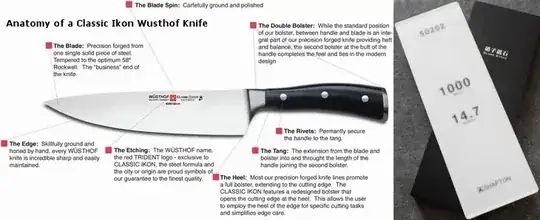This is like saying "I bought my grandpa a Faber Castel pencil and 200 gm acid-free paper, and now the pencil is not drawing realistic portraits, why".
Knife sharpening is a fine motor skill. The only way to learn it is through hours of deliberate practice. It is also a tricky skill to learn, because you don't really get immediate feedback per stroke, and there is not that much affordance. So it is more difficult to learn, especially learn on your own, than something like throwing a ball.
If your grandpa wants to sharpen his knives with a stone, he will have to put in his hours of learning. It is impossible to say how many he needs before he starts to see consistently good results, it can be a dozen or it can be over a hundred.
It is best to start learning on old, bad knives, since a learner's first attempts frequently destroy the edge, making it more difficult to repair it later.
